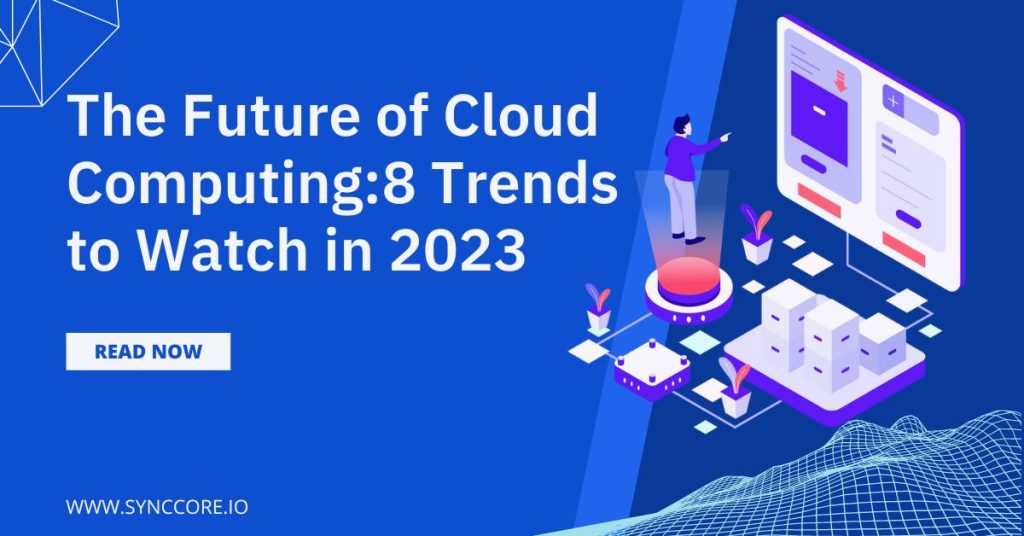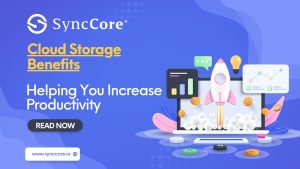Table of Contents
Future of Cloud Computing
Cloud technology is the lifeblood of modern technical growth and a trendsetter for the next generation in the modern tech sector. During the early stages of the COVID-19 epidemic, businesses worldwide began incorporating the work-from-home concept and numerous digital technologies into their operations.
Another unintended consequence of this new distant working norm was the rise of cloud models. And, when organizations began to adopt cloud models at a quicker rate, the models themselves began to evolve at a faster rate as well. As a result, cloud technology has grown tremendously in recent years.
Here are eight cloud computing trends that will have an impact on the IT sector in 2023 and beyond:

1. Artificial Intelligence and Machine Learning
Most experts extol artificial intelligence and machine learning (AI and ML) as critical technologies for the future of business, oblivious to the fact that they require large amounts of bandwidth and processing power. A typical company network lacks the resources to run AI/ML-based solutions.
This is where cloud data centers come into play. Cloud-based data centers boost processing power and bandwidth, allowing machine learning platforms to create more training data. As a result, the incorporation of AI and ML into the cloud platform became critical.
2. Edge Computing
Edge computing is a distributed IT architecture that processes client data as close to its source as possible within networks. It offers near-instant data processing with minimal to no delay and improves data security as the volume of transferred data lowers.
The classical computing approach does not provide enough network infrastructure security or efficiency. As a result, enterprises are moving their data and computing to the network’s edge.
Bringing data processing, collecting, storage, and analysis closer to the data source reduces latency while allowing the usage of edge devices. Nowadays, edge computing technology enables numerous smart gadgets (such as smartphones, smartwatches, and smart automobiles) to function seamlessly.
3. Virtual Cloud Desktops
A virtual cloud desktop, also known as desktop as a service (DaaS), is a cloud-based service that allows a whole desktop operating system and associated software applications to be sent directly to a laptop, desktop, or other devices. Companies are charged for the amount of time their employees spend signing in to their devices.
4. Serverless Computing
In serverless computing, servers are still used. On the other hand, this cloud model makes it much easier for enterprises to access backend services without worrying about infrastructure administration.
In serverless computing, cloud service providers charge users depending on their cloud consumption rather than a fixed number of servers or bandwidth. As a result, companies may concentrate on their initiatives and products rather than their backend.
The serverless paradigm is incredibly appealing and gaining traction among businesses. Business leaders should consider shifting their cloud services to serverless in the future to avoid spending time and money on an old cloud paradigm.
5. Automation
Automation is a critical driver of cloud adoption, as it improves operational efficiency in businesses.
Businesses that migrate their data and systems to the cloud can automate their internal business operations. This is great for those who want to work in a fast-paced IT environment.
6. Hybrid Cloud
Today, some firms prefer the hybrid cloud approach, which combines public cloud services with a private cloud dedicated to a single enterprise. It is especially appropriate for businesses that gather sensitive data or operate in highly regulated industries, such as insurance, where data privacy is essential.
7. Secure Access Service Edge (SASE)
SASE is a cybersecurity concept that establishes a safe interface between applications/services and organizational aspects such as people, systems, and devices.
Security architecture is being moved to the cloud as a result of enterprises’ digital transformation. This is partly due to the cloud providing significant wide area network (WAN) capacity to service digital businesses worldwide.
According to market experts, SASE can safeguard enterprises from cyber threats, and some SASE providers now provide secure web gateways (SWGs).
8. Cloud Disaster Recovery
Cloud disaster recovery (CDR) is a cloud-based solution that restores an organization’s key systems fast after a disaster and allows remote access to systems within secure virtual environments. It also integrates many backup methods and services to safeguard resources such as data, programs, and configurations.
Cloud backups enable businesses to restore any impacted data and resume normal operations. Traditional disaster recovery can be time-consuming and costly when managing a secondary data center, however, CDR is very cost-effective.
Conclusion
The cloud technology revolution will continue to accelerate in 2023 and beyond. To address commercial problems, an increasing number of enterprises and organizations will move their operations to the cloud.
As a result, cloud technology will continue to evolve in the next few years — and will almost certainly play a key role in altering the economy.



